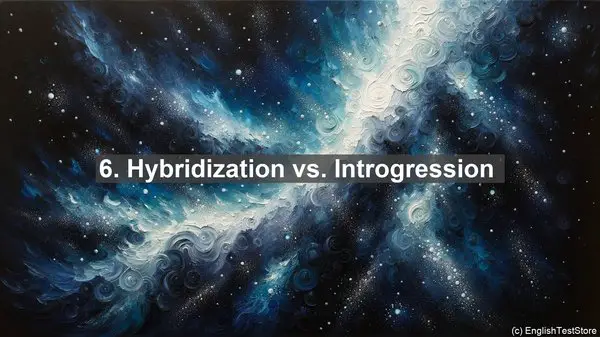Introduction
Welcome to today’s lesson on paleogenetics. As you delve deeper into this fascinating field, you may encounter some words that seem similar but have distinct meanings. In this lesson, we’ll explore the top 10 commonly confused words in paleogenetics, ensuring you have a solid grasp of their definitions.

1. Ancient vs. Extinct
While both words refer to the past, ‘ancient’ denotes something old, often in relation to human history, whereas ‘extinct’ refers to a species that no longer exists. In paleogenetics, we often study ancient DNA, which provides insights into extinct species’ genetic makeup.
2. Homologous vs. Analogous
These terms describe similarities between organisms. ‘Homologous’ features are inherited from a common ancestor, indicating a shared evolutionary history. On the other hand, ‘analogous’ features serve similar functions but evolved independently. Distinguishing between the two is crucial when studying genetic traits in paleogenetics.
3. Mutation vs. Polymorphism
Both words relate to genetic variation. A ‘mutation’ is a permanent alteration in DNA, often resulting from errors during replication. In contrast, a ‘polymorphism’ refers to a variation that exists in a population, with multiple forms being present. Understanding these terms helps us analyze genetic diversity in ancient populations.
4. Genotype vs. Phenotype
When studying an organism’s genetics, the ‘genotype’ refers to its genetic makeup, the combination of alleles it possesses. The ‘phenotype,’ on the other hand, is the observable physical or biochemical characteristics resulting from the genotype’s interaction with the environment. In paleogenetics, we often infer phenotypes from genetic data.
5. Hominid vs. Hominin
These terms describe different branches of the human evolutionary tree. ‘Hominid’ encompasses humans and their closest relatives, while ‘hominin’ refers to the group that includes modern humans and our direct ancestors. Precise usage of these terms is vital to accurately discuss human evolution in paleogenetics.
6. Hybridization vs. Introgression
Both words describe the mixing of genetic material between populations. ‘Hybridization’ occurs when individuals from two distinct species interbreed, resulting in offspring with mixed ancestry. ‘Introgression,’ on the other hand, refers to the transfer of genetic material from one population to another. Understanding these processes is crucial in tracing genetic lineages in paleogenetics.

7. Phylogeny vs. Phylogenetics
While related, these terms have distinct meanings. ‘Phylogeny’ refers to the evolutionary history and relationships between organisms, often depicted in a tree-like diagram. ‘Phylogenetics’ is the study of constructing and analyzing these evolutionary trees. Both are fundamental in understanding the genetic connections between ancient and modern species.
8. Paleogenetics vs. Archaeogenetics
These terms are often used interchangeably, but they have nuanced differences. ‘Paleogenetics’ focuses on studying ancient DNA to understand past populations and their genetic makeup. ‘Archaeogenetics’ encompasses a broader scope, including the genetic analysis of archaeological remains. Both fields contribute to our knowledge of ancient populations.
9. Inference vs. Confirmation
In paleogenetics, we often make ‘inferences’ based on available evidence. These are educated guesses or interpretations that help us understand the past. ‘Confirmation,’ on the other hand, involves additional data or experiments that provide stronger support for a hypothesis. Balancing inference and confirmation is crucial in scientific research.
10. Ancient DNA vs. Modern DNA
While the basic structure of DNA remains the same, ‘ancient DNA’ poses unique challenges. It is often degraded and present in limited quantities. Additionally, it may be contaminated with modern DNA. These factors necessitate specialized techniques and rigorous quality control when working with ancient DNA in paleogenetics.
